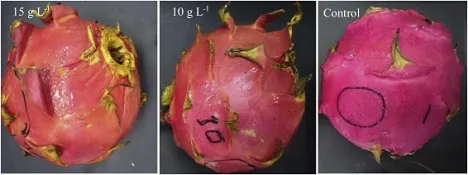Scientists at the University of Nottingham, Malaysia Campus, have evaluated the antifungal effect of ginger, turmeric rhizome and “dukung anak” (medicinal herb) crude extract against Colletotrichum gloeosporioides at minimal concentrations 2.5, 5.0, 7.5 and 10.0 g/L (in vitro). Furthermore, the scientists have evaluated the possibility of using these extracts as an edible coating to control postharvest anthracnose in dragon fruits at maximum concentrations of 5.0, 10.0 and 15.0 g/L (in vivo).

"The results showed that all plant extracts exhibited a significant antifungal activity against C. gloeosporioides by inhibiting mycelial growth and conidial germination, and caused distortion, shrinking and swelling of fungal hyphae. In vitro study, Ginger crude extracts at 10.0 g/L showed the best effect by suppressing mycelial growth (88.48 %) and conidial germination (87.50 %) which was comparable to commercial fungicide (Mancozeb) at 2.0 g/L (80.45 %)", explain the scientists..
In vivo study, all plant crude extracts at 15.0 g/L showed disease incidence (DI) and disease severity (DS) due to phytotoxicity. However, using “dukung anak” at 5.0 or 10.0 g/L significantly controlled anthracnose without differing in turmeric-treated fruits at 10.0 g/L after 28 days of cold storage at 11 ± 2 °C, 80 % RH. On the contrary, dragon fruits treated with ginger at 5.0 g/L and above showed severe disease incidence due to phytotoxicity.
"Crude extract of dukung anak or turmeric can be used as bio-fungicide to control anthracnose in dragon fruits at 10.0 g/L, while concentration at 15.0 g/L and above may worsen diseases in dragon fruits due to phytotoxicity," conclude the experts.
Source: Paa K. Bordoh, Asgar Ali, Matthew Dickinson, Yasmeen Siddiqui, 'Antimicrobial effect of rhizome and medicinal herb extract in controlling postharvest anthracnose of dragon fruit and their possible phytotoxicity', 2020, Scientia Horticulturae, Vol. 265, 109249.
